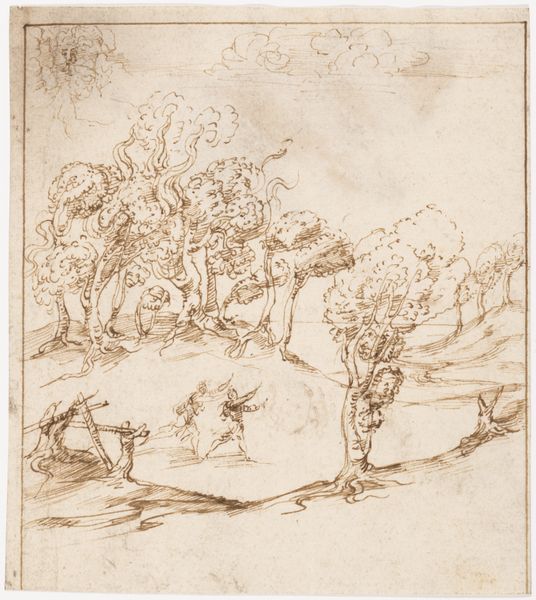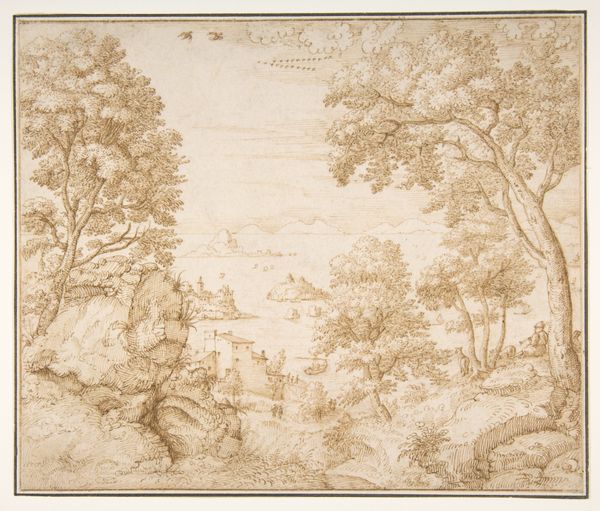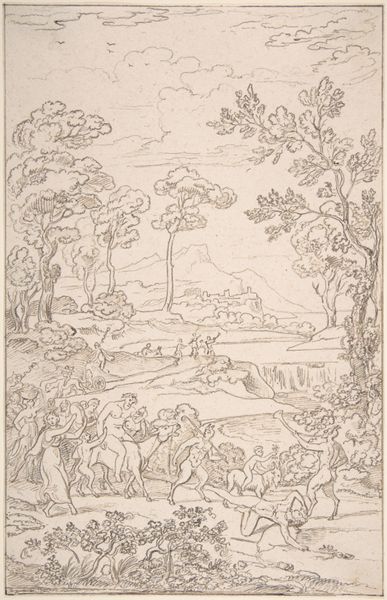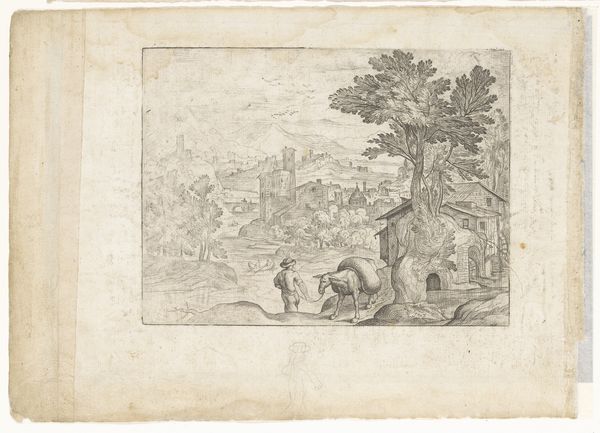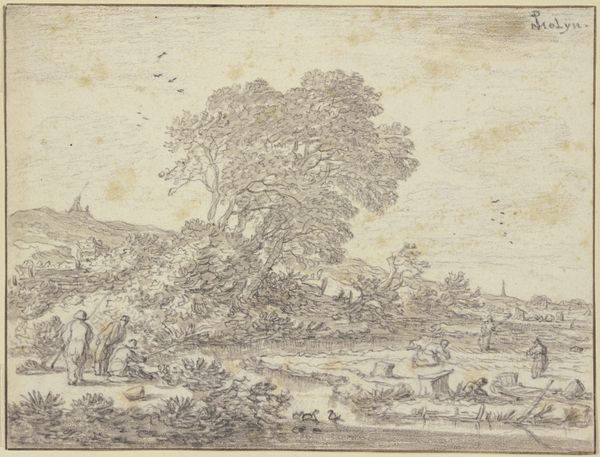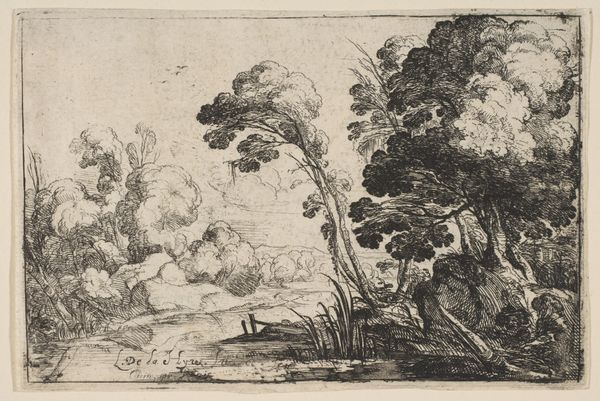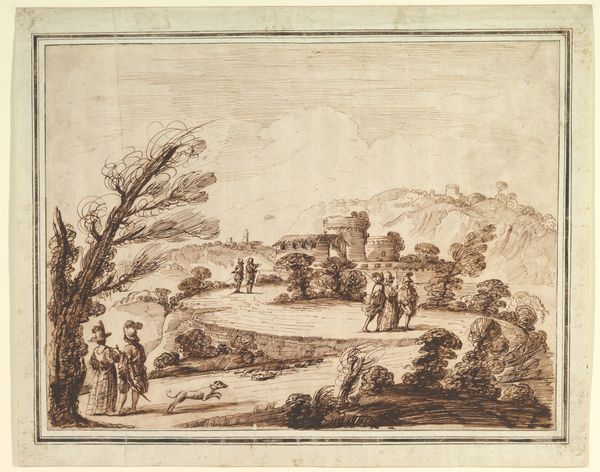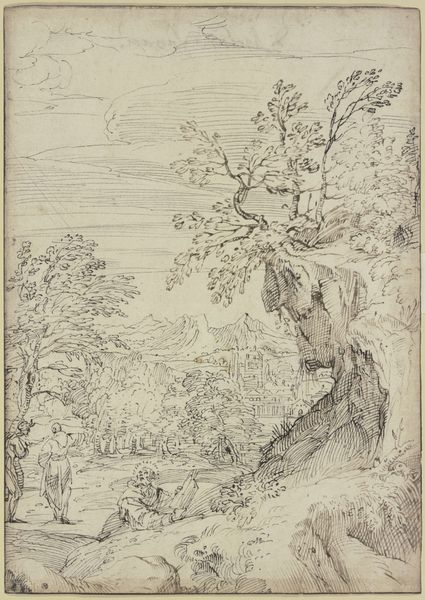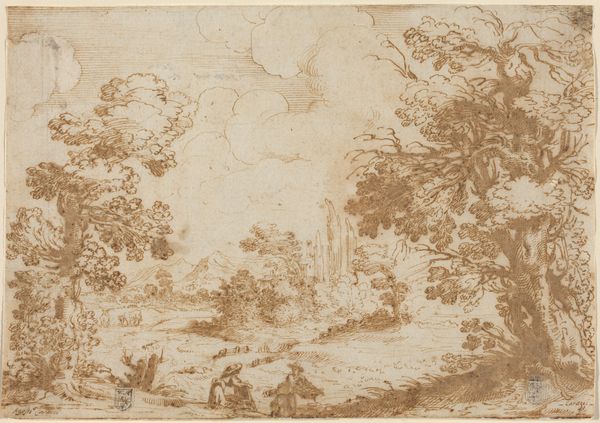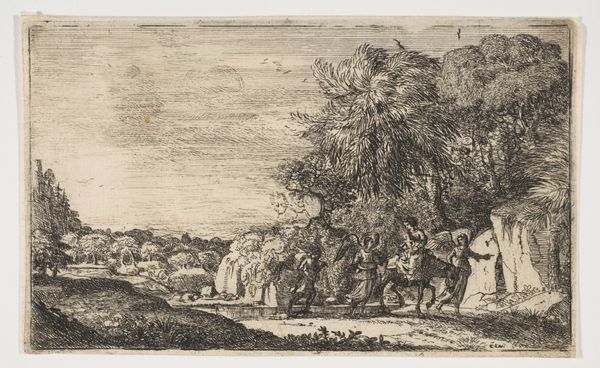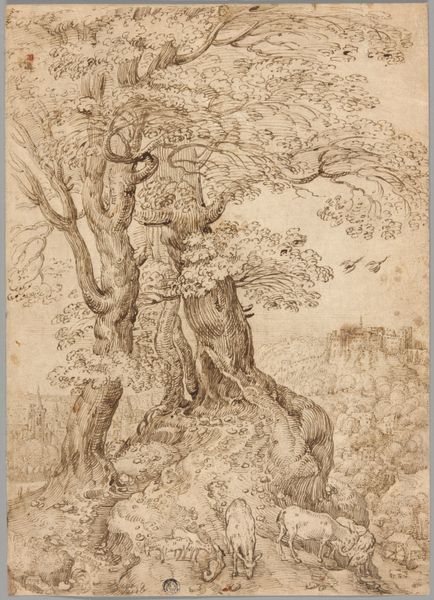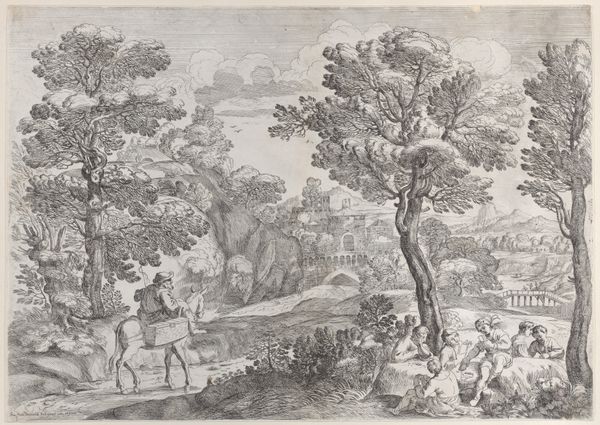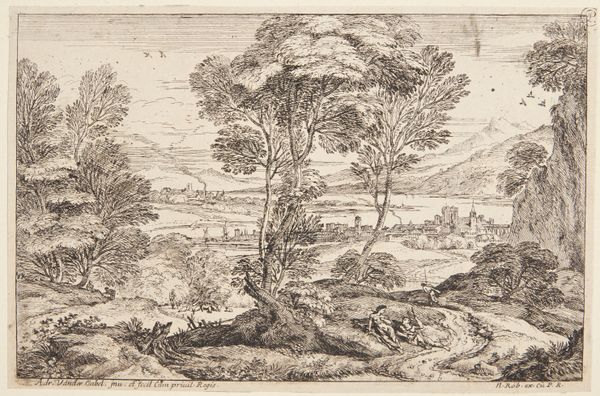
Shepherd Carving an Inscription on Tree Trunk with Figures and Sheep in Background n.d.
0:00
0:00
drawing, print, paper, ink, graphite
#
drawing
#
baroque
# print
#
landscape
#
etching
#
paper
#
ink
#
water
#
graphite
#
watercolour illustration
#
genre-painting
Dimensions: 275 × 258 mm
Copyright: Public Domain
Editor: Here we have Agostino Tassi’s drawing, “Shepherd Carving an Inscription on a Tree Trunk with Figures and Sheep in the Background," created at an unknown date, here at the Art Institute of Chicago. The landscape scene seems to capture a pastoral ideal, but there's something almost melancholic about the solitary figure. What's your interpretation of this work? Curator: It's interesting you pick up on that tension. While seemingly idyllic, these pastoral scenes often mask power dynamics. Who is allowed to enjoy leisure? Who is excluded? Tassi, working in the Baroque period, positions this shepherd within a specific social and artistic hierarchy. The act of carving the inscription - whose voice is being amplified, and whose is silenced by this inscription? Consider how landscape art has historically been used to justify claims of ownership and control. Editor: That makes me think about how the "natural" world is never truly separate from social and political concerns. Is the inscription maybe a territorial marker of some kind, then? Curator: Possibly. It prompts us to consider whose stories are etched into the landscape and at what cost. What are the implications of claiming ownership through artistic inscription? Also consider this, is it ownership or love? And if the latter, does this act challenge traditional portrayals of masculinity at the time? Editor: I hadn't thought of the love angle, that adds a whole other layer! So, it is not a straightforward celebration of rural life but a commentary on social structures and perhaps even on romantic notions, which really makes me appreciate Tassi's ability to hint at complexity within simplicity. Curator: Precisely. By questioning the seemingly innocent act of carving, we unveil a network of historical, social, and even personal motivations. Editor: Thank you, that’s a different way of looking at this work of art.
Comments
No comments
Be the first to comment and join the conversation on the ultimate creative platform.
